In American society, our collective love of Yoga is fairly new. Yoga itself is not at all new, however, and is actually so old that many of the poses are named after stories in Hindu Mythology.
Hindu Mythology is fascinating and exciting, and its link to yoga may provide a pose with emotional purpose to pair with the physical asana and mental relaxation.
We all do yoga for different reasons–to feel peace, to find joy, to improve muscle function, to gain health, etc. and knowing a few stories behind the poses might give you a little extra enjoyment in your yoga practice.
Will you channel the immense courage and strength of the demigod Hanuman? Will you channel the unconditional determination of Sage Marichi? Will you channel the peaceful fire in the heart of Goddess Durga as she relentlessly protects the innocent? Happy practicing, yogis!
The Fascinating Tales Behind 6 of Your Favorite Yoga Poses
“Body is not stiff. Mind is stiff” -Pattabhi Jois
“Why fear?” -Pattabhi Jois
1. Full Splits
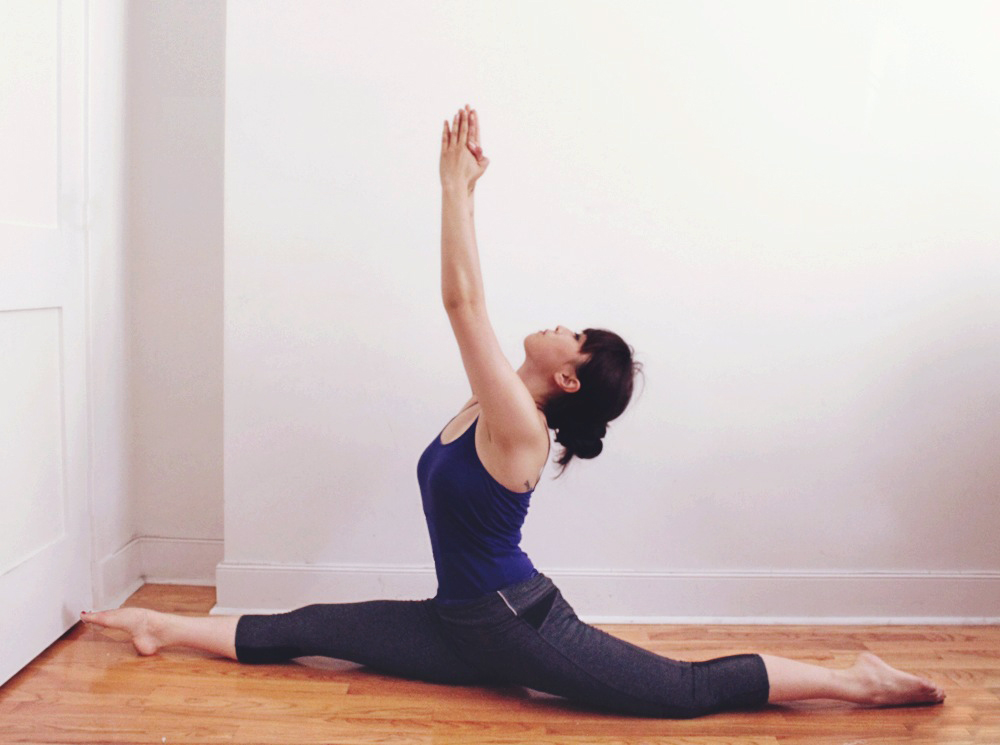
Sanskrit: Hanumanasana
Benefits: Stretches the hips, hamstrings, quads, and groin, opens back, builds courage.
Named for: Hanuman the Demigod
The Story:
Hanuman the Hindu monkey God is the son of the wind and a great warrior. He has a unique ability to leap across enormous distances (hundreds of miles), and he received this gift from his father Vayu, the God of the wind. As he grew up Hanuman became best friends with the God, Lord Rama, and helped him tirelessly in battle. He leapt across great distances in the form of the full splits, to fight and destroy Rama’s enemies.
In return for his devotion and friendship, Rama asked Hanuman what reward he could give him. Hanuman’s response was only that he allow him to continue his service. This is why Hanuman symbolizes devotion, courage, strength, and faith and service to a cause. In Sanskrit, “Hanuh” means jaw–similar to how we say in English that if you’re tough you have a strong jaw bone. Aptly named!
2. Goddess Pose
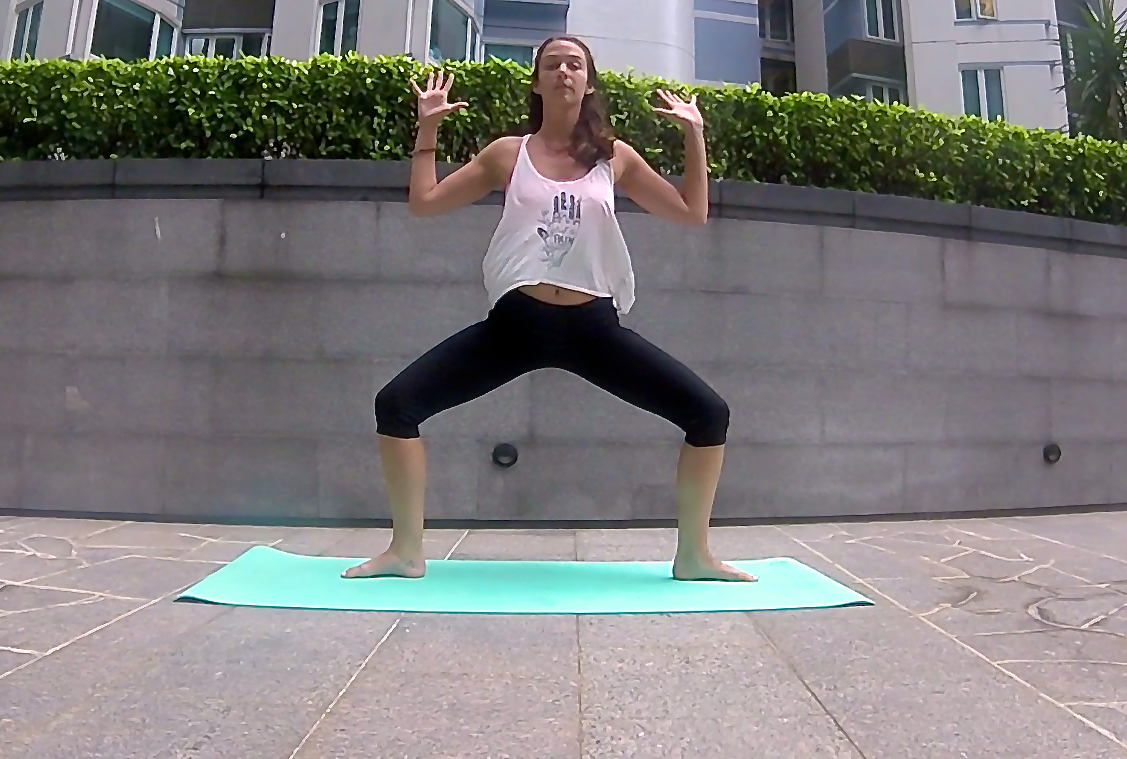
Sanskrit: Utkata Konasana
Benefits: Opens hips and chest, stimulates reproductive system, warms and energizes the body, strengthens feet, instills mental peace, and builds self-esteem.
Named for: Durga the Warrior Goddess
The Story:
Durga is the Hindu warrior goddess, who symbolizes protection and combating evil and demonic forces that threaten peace and dharma of the good.
The evil King Mahisha was selfish and greedy, believing he was invincible and destined to be the most powerful monarch. He took over kingdoms without thought for those who inhabited them, and with each victory, he readied his people for another war to take nations. Innocent people prayed to the Gods for protection, and the Gods prepared. Lord Shiva gave the Goddess Durga a trident to wield, the God of the Mountains gave her a lion to ride, and the God of the wind gave her bows and arrows to shoot. Durga approached the land and Mahisha became frightened. He launched hundreds of arrows and she destroyed them all moving forward. He transformed into an elephant to attack her lion, but she launched her bows and arrows. In a final attempt, Mahisha transformed into the water buffalo (for his mother was a water buffalo), and he charged. Durga leapt from her lion and attacked with her trident and Mahisha fell.
The people rejoiced, thanking Durga for her protection, and this solidified her as the Warrior Goddess of protection and one eliminates suffering. In Sanskrit Durga means “fort” or “a place that is difficult to overrun.”
3. Tree Pose

Sanskrit: Vrikshasana
Benefits: Improves balance, brings health to tendons in legs, strengthens feet, opens hips, builds self-confidence and connection to the natural world.
Named for: Sita, the Lord Rama’s wife (Vriksha meaning tree, Asana meaning pose/posture)
The Story:
Sita, the beautiful wife of Lord Rama, was kidnapped by the demon king Ravana. He took her away to his kingdom to permanently make her his queen. Being a loyal wife who loved Rama, she refused his riches and privilege and instead sat outside the walls all day in a forest of Ashoka trees, becoming increasingly unhappy and losing herself. This went on for weeks until the Lord Rama sent his humble servant Hanuman the demi-god (see above!) to remind her of who she was. Hanuman’s spirit bid her to find strength and peace from the lovely forest she was in, and to find her trust and solace in nature. The trees and nature restored Sita’s connection to the world she loved and gave her great peace. She sat beneath the Ashoka trees in peace and joy.
4. Dancer’s Pose
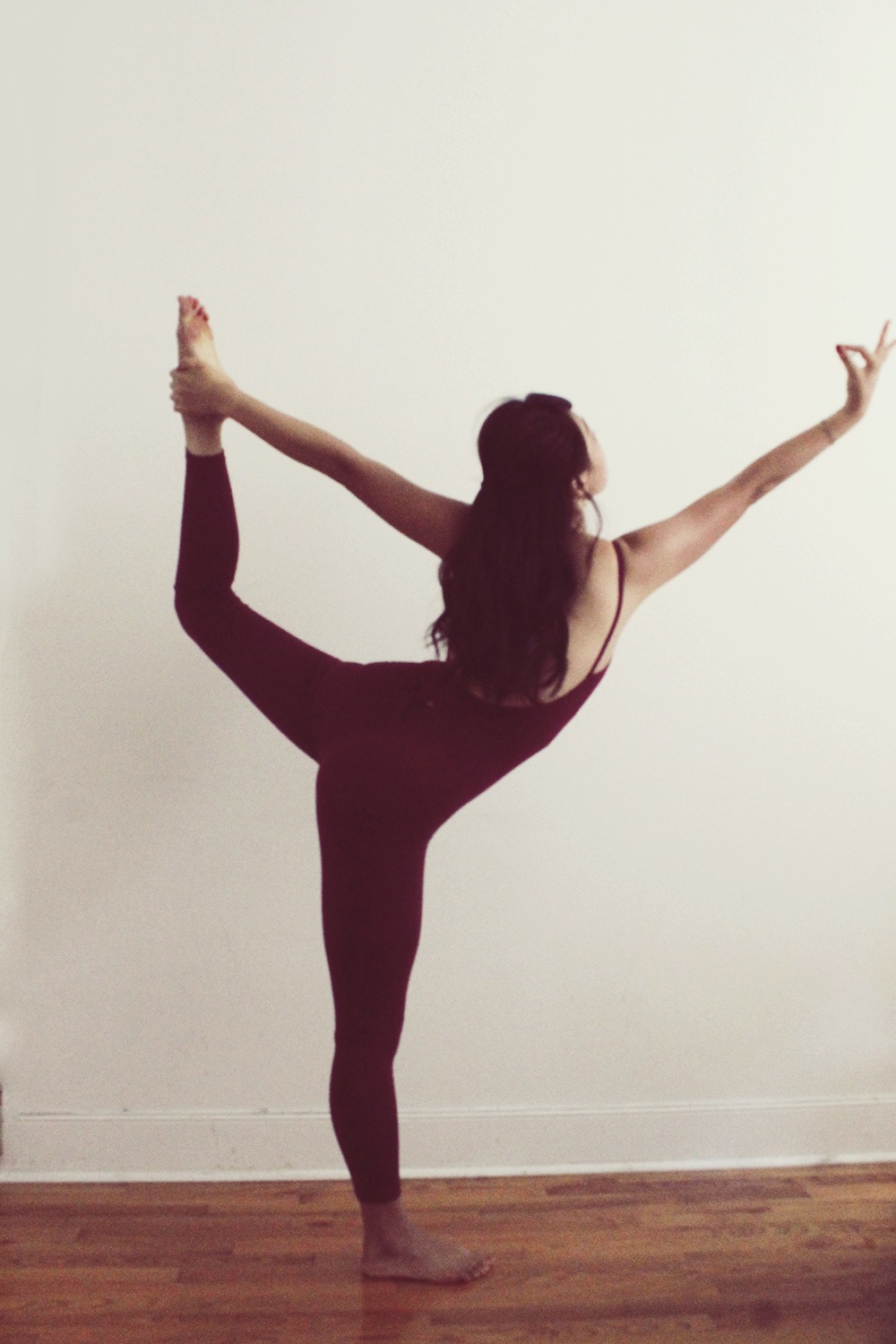
Sanskrit: Natarajasana
Benefits: Strengthens hips, legs, shoulders, and chest, stretches groin and hips, opens heart and back, improves concentration and instills bliss.
Named for: Shiva, Lord of the Dance
The Story:
Lord Shiva is known as Shiva the Destroyer, but is perhaps better understood as Shiva the Transformer, for we all know that destruction is a part of growth and rebirth. The story behind Dancer’s Pose, or Nataraja, takes place deep in the Tillai forest in India. This location is described in many old songs and poems as the setting for several divine and demonic stories. In this story, Shiva arrived at the Tillai Forest as the beggar Bhikshatana, in an effort to trick the sages who take part in irreverent and superficial worship. The sages feel threatened and send a demon and snake to attack Shiva, who easily defeats his opposition. After the battle, Lord Shiva, the “Lord of the Dance” performs his “Dance of Bliss” called Nataraja, displaying his power, strength, mental peace, and beauty.
5. Pose Named for Sage Marichi
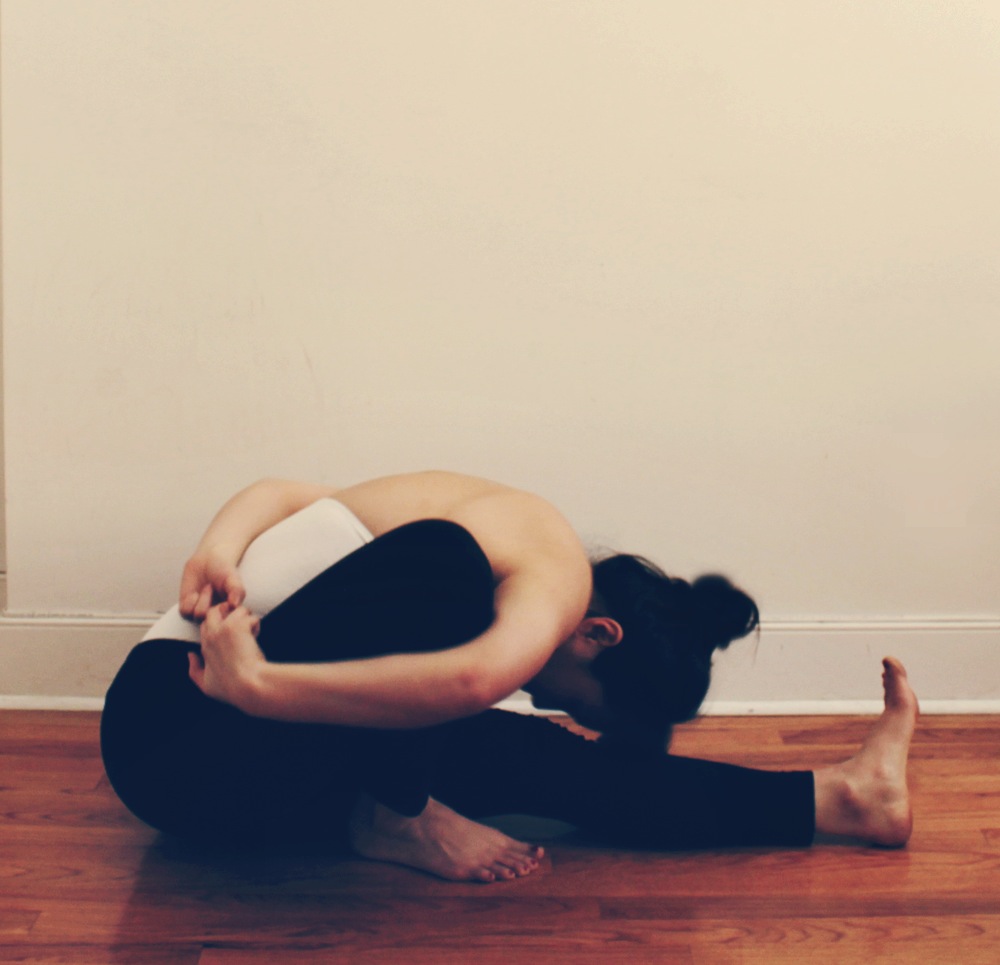
Sanskrit: Marichyasana
Benefit: Stretches hamstrings and hips, stimulates internal organs, improves digestion, calms the mind.
The Story:
The Sage Marichi was born to Brahma, known as the Divine Creator. One day Marichi went to the woods to meditate and collect flowers. His wife, Dharmavrata, came to wash his feet, but as she began, his father the Lord Brahma appeared. Dharmavrata did not know what to do so she turned to worship the Lord Brahma. Later Marichi became angered over her disobedience, so he turned her into a stone, and his Sage qualities made his power so strong the gods could not undo it. Due to her piety, she was transformed into a holy stone that all of the Gods desired for its power and lovely peace. This is the Marichyasana pose.
(Note: No one said these old school Hindu God relationships were progressive relationships 😉 )
6. Warriors 1, 2, and 3
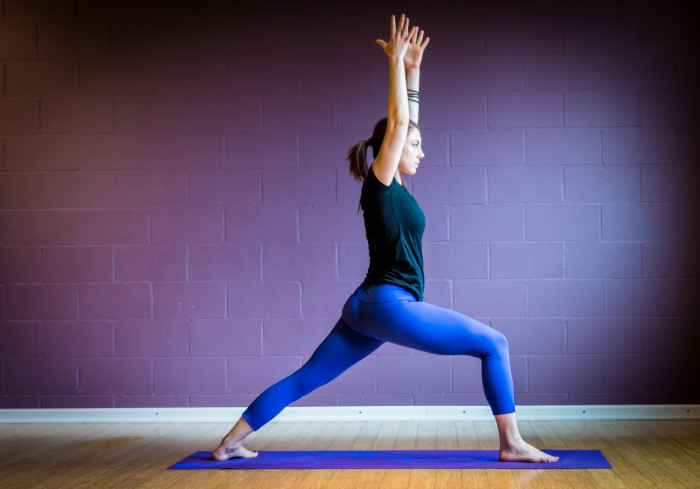
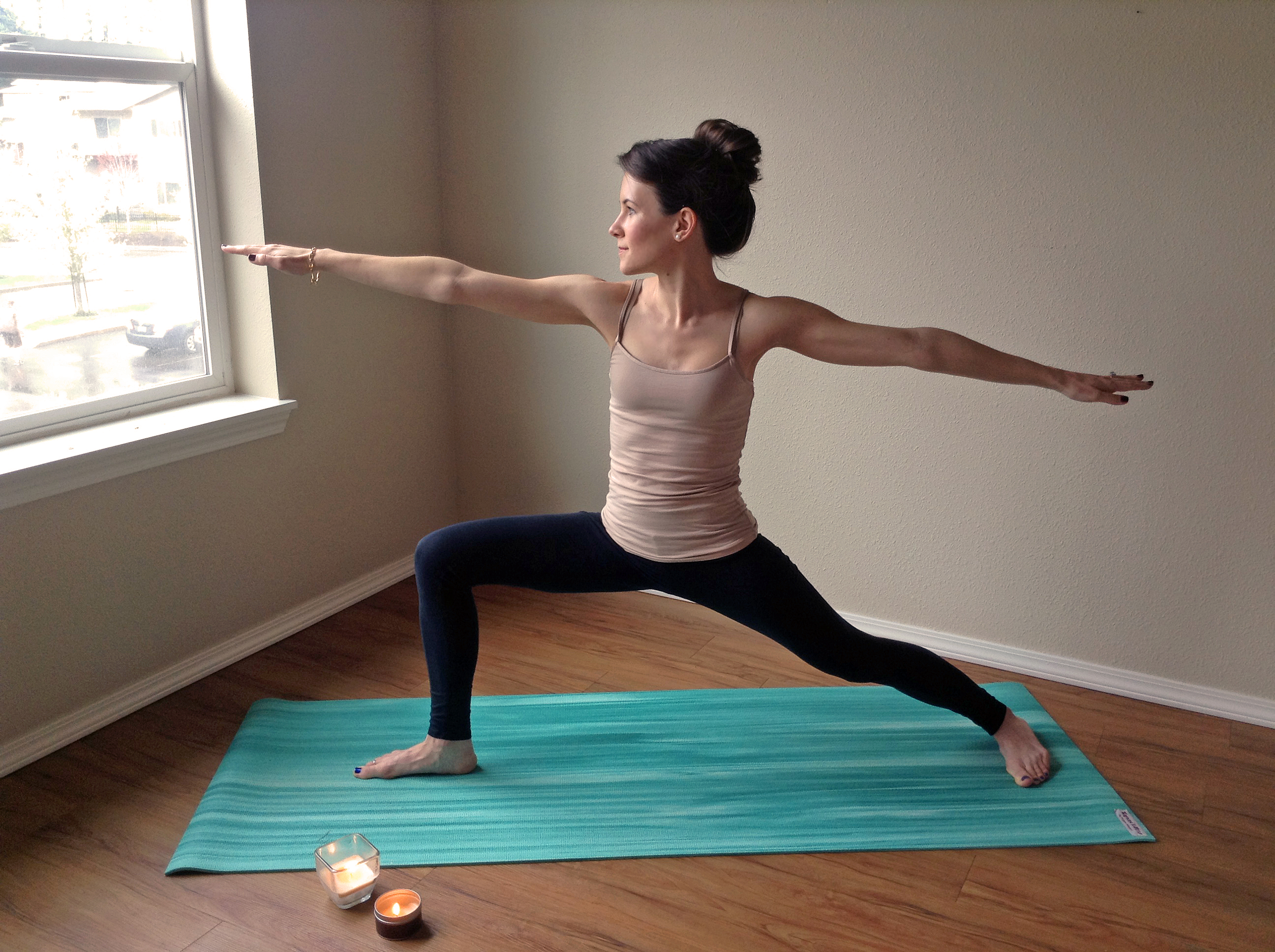
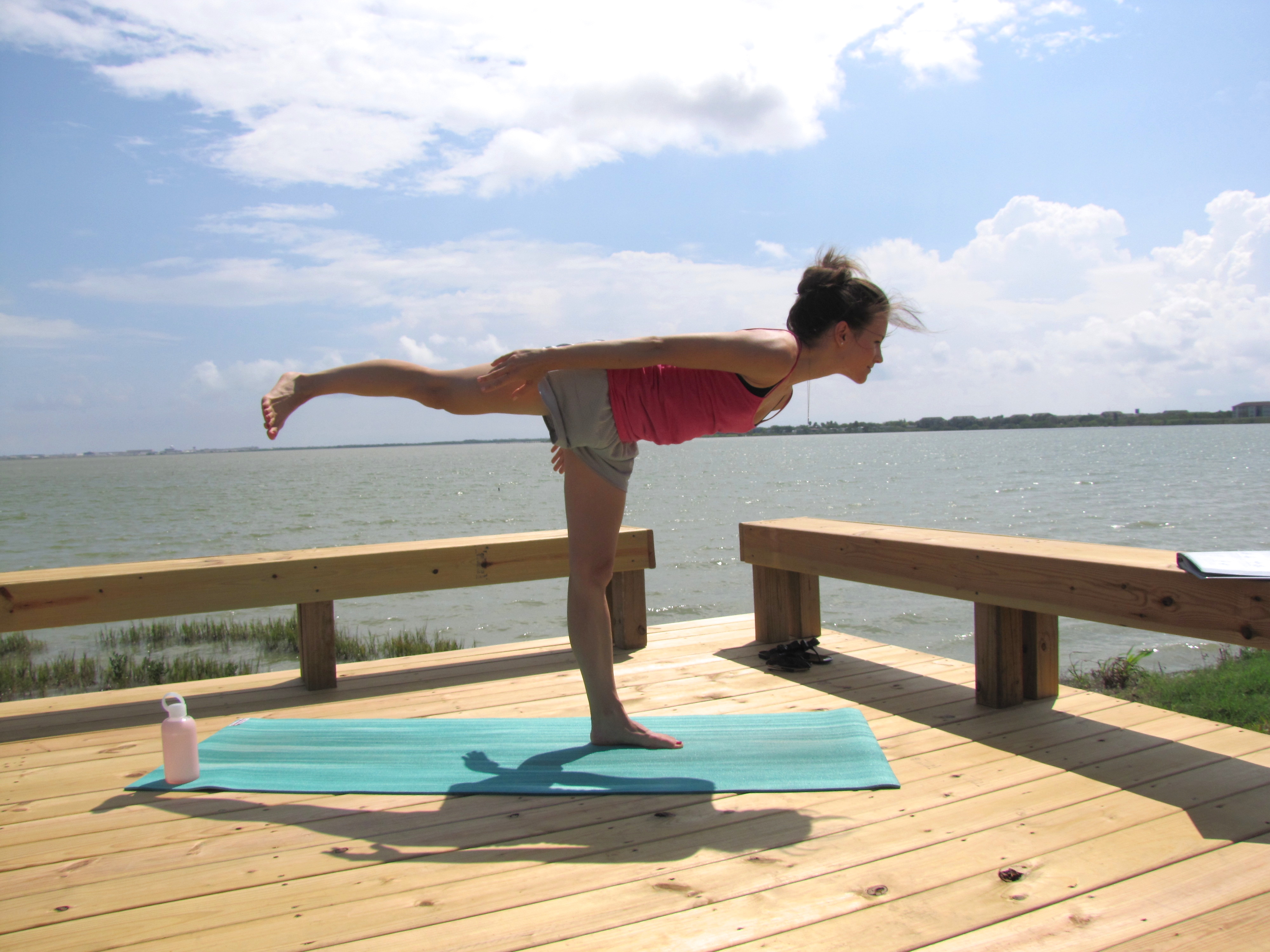
Sanskrit: Virabhadrasana 1, 2, and 3
Benefit: Stretches hips and groin, builds concentration, opens chest and lungs, improves circulation, confidence, and focus.
The Story:
The powerful Lord Shiva fell in love with and married the beautiful woman Sati. Sati’s father, the powerful King Daksha, did not approve of Lord Shiva and his daughter Sati’s marriage so he publically snubbed and humiliated her. Her humiliation and sad anger lead to her death while in a meditative trance. The death of his beloved wife angered Lord Shiva to dangerous levels, and he created a Super Warrior called Virabhadra. In sanskrit, “Vira” meaning Hero and “Bedhra” means friend. He sent Virabhadra to go to Yagna which was the location King Daksha snubbed his daughter, and kill the King Daksha.
Warrior 1 is Virabhadra thrusting up through the ground into Yagna with sword in hand.
Warrior 2 is Virabhadra making his presence known by standing ready to strike with his sword.
Warrior 3 is Virabhadra lifting his sword and cleanly using it to behead King Daksha who caused him to lose his love. I guess yoga is not all peace and love, eh?
__
The above are only a few examples of Hindu mythology stories that give yoga postures historical and cultural context. May they help you summon the peace and patience of a tree when in Vrikshasana pose, and the beauty and power of Lord Shiva the Transfomer in Dancers pose. Or if needed, when practicing the Warrior postures, call on Virabhadra to deliver the final blow to whatever evil has affected you. What are gods for, after all?
“Yoga is an internal practice. the rest is just a circus.”
-Pattabhi Jois

Which yoga asanas and stories do you find most inspiring?
Also by Anastasia: Benefits of Inversions – Plus 4 Poses to Get Started
Related: 10 Yoga Quotes To Inspire You On And Off The Mat
8 Ways To Deepen Your Yoga Practice That Don’t Involve Crazy Intense Poses
Get more like this–sign up for our newsletter for exclusive inspirational content!
__
Photo: Peaceful Dumpling, Jess Davis, Zoey Greco, Caitlyn Gibson, Mary Hood Luttrell




